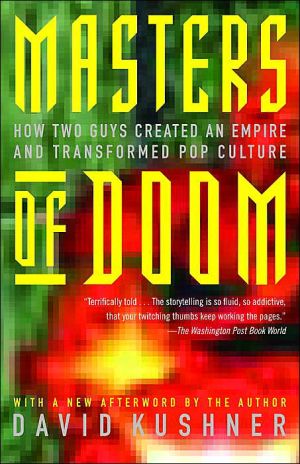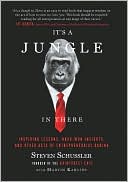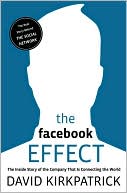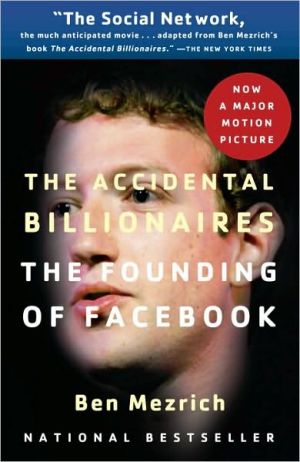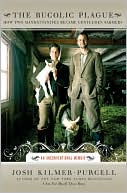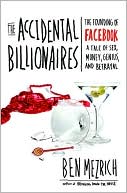Masters of Doom: How Two Guys Created an Empire and Transformed Pop Culture
Masters of Doom is the amazing true story of the Lennon and McCartney of video games: John Carmack and John Romero. Together, they ruled big business. They transformed popular culture. And they provoked a national controversy. More than anything, they lived a unique and rollicking American Dream, escaping the broken homes of their youth to produce the most notoriously successful game franchises in history—Doom and Quake— until the games they made tore them apart. This is a story of friendship...
Search in google:
Masters of Doom is the amazing true story of the Lennon and McCartney of video games: John Carmack and John Romero. Together, they ruled big business. They transformed popular culture. And they provoked a national controversy. More than anything, they lived a unique and rollicking American Dream, escaping the broken homes of their youth to produce the most notoriously successful game franchises in history—Doom and Quake— until the games they made tore them apart. This is a story of friendship and betrayal, commerce and artistry—a powerful and compassionate account of what it's like to be young, driven, and wildly creative. The Los Angeles Times [T]he truth is that any rabid fans of Doom and Quake -- and those intrigued by the astonishing influence those games had on popular culture -- are likely to devour this book in one sitting. Although no profound lessons are to be learned from Masters of Doom, it does tell a fascinating story. — Carmela Ciuraru
Chapter 1\ The Rock Star\ \ Eleven-year-old John Romero jumped onto his dirt bike, heading for trouble again. A scrawny kid with thick glasses, he pedaled past the modest homes of Rocklin, California, to the Roundtable Pizza Parlor. He knew he wasn’t supposed to be going there this summer afternoon in 1979, but he couldn’t help himself. That was where the games were.\ Specifically, what was there was Asteroids, or, as Romero put it, “the coolest game planet Earth has ever seen!” There was nothing else like the feeling he got tapping the control buttons as the rocks hurled toward his triangular ship and the Jaws-style theme music blipped in suspense, dum dum dum dum dum dum; Romero mimicked these video game sounds the way other kids did celebrities. Fun like this was worth risking everything: the crush of the meteors, the theft of the paper route money, the wrath of his stepfather. Because no matter what Romero suffered, he could always escape back into the games.\ At the moment, what he expected to suffer was a legendary whipping. His stepfather, John Schuneman—a former drill sergeant—had commanded Romero to steer clear of arcades. Arcades bred games. Games bred delinquents. Delinquency bred failure in school and in life. As his stepfather was fond of reminding him, his mother had enough problems trying to provide for Romero and his younger brother, Ralph, since her first husband left the family five years earlier. His stepfather was under stress of his own with a top-secret government job retrieving black boxes of classified information from downed U.S. spy planes across the world. “Hey, little man,” he had said just a few days before, “consider yourself warned.”\ Romero did heed the warning—sort of. He usually played games at Timothy’s, a little pizza joint in town; this time he and his friends headed into a less traveled spot, the Roundtable. He still had his initials, AJR for his full name, Alfonso John Romero, next to the high score here, just like he did on all the Asteroids machines in town. He didn’t have only the number-one score, he owned the entire top ten. “Watch this,” Romero told his friends, as he slipped in the quarter and started to play.\ The action didn’t last long. As he was about to complete a round, he felt a heavy palm grip his shoulder. “What the fuck, dude?” he said, assuming one of his friends was trying to spoil his game. Then his face smashed into the machines.\ Romero’s stepfather dragged him past his friends to his pickup truck, throwing the dirt bike in the back. Romero had done a poor job of hiding his bike, and his stepfather had seen it while driving home from work. “You really screwed up this time, little man,” his stepfather said. He led Romero into the house, where Romero’s mother and his visiting grandmother stood in the kitchen. “Johnny was at the arcade again,” his stepfather said. “You know what that’s like? That’s like telling your mother ‘Fuck you.’ ”\ He beat Romero until the boy had a fat lip and a black eye. Romero was grounded for two weeks. The next day he snuck back to the arcade.\ Romero was born resilient, his mother, Ginny, said, a four-and-one-half-pound baby delivered on October 28, 1967, six weeks premature. His parents, married only a few months before, had been living long in hard times. Ginny, good-humored and easygoing, met Alfonso Antonio Romero when they were teenagers in Tucson, Arizona. Alfonso, a first-generation Mexican American, was a maintenance man at an air force base, spending his days fixing air conditioners and heating systems. After Alfonso and Ginny got married, they headed in a 1948 Chrysler with three hundred dollars to Colorado, hoping their interracial relationship would thrive in more tolerant surroundings.\ Though the situation improved there, the couple returned to Tucson after Romero was born so his dad could take a job in the copper mines. The work was hard, the effect sour. Alfonso would frequently come home drunk if he came home at all. There was soon a second child, Ralph. John Romero savored the good times: the barbecues, the horsing around. Once his dad stumbled in at 10:00 p.m. and woke him. “Come on,” he slurred, “we’re going camping.” They drove into the hills of saguaro cacti to sleep under the stars. One afternoon his father left to pick up groceries. Romero wouldn’t see him again for two years.\ Within that time his mother remarried. John Schuneman, fourteen years her senior, tried to befriend him. One afternoon he found the six-year-old boy sketching a Lamborghini sports car at the kitchen table. The drawing was so good that his stepfather assumed it had been traced. As a test, he put a Hot Wheels toy car on the table and watched as Romero drew. This sketch too was perfect. Schuneman asked Johnny what he wanted to be when he grew up. The boy said, “A rich bachelor.”\ For a while, this relationship flourished. Recognizing Romero’s love of arcade games, his stepfather would drive him to local competitions—all of which Romero won. Romero was so good at Pac-Man that he could maneuver the round yellow character through a maze of fruit and dots with his eyes shut. But soon his stepfather noticed that Romero’s hobby was taking a more obsessive turn.\ It started one summer day in 1979, when Romero’s brother, Ralph, and a friend came rushing through the front door. They had just biked up to Sierra College, they told him, and made a discovery. “There are games up there!” they said. “Games that you don’t have to pay for!” Games that some sympathetic students let them play. Games on these strange big computers.\ Romero grabbed his bike and raced with them to the college’s computer lab. There was no problem for them to hang out at the lab. This was not uncommon at the time. The computer underground did not discriminate by age; a geek was a geek was a geek. And since the students often held the keys to the labs, there weren’t professors to tell the kids to scram. Romero had never seen anything like what he found inside. Cold air gushed from the air-conditioning vents as students milled around computer terminals. Everyone was playing a game that consisted only of words on the terminal screen: “You are standing at the end of a road before a small brick building. Around you is a forest. A small stream flows out of the building towards a gully. In the distance there is a gleaming white tower.”\ This was Colossal Cave Adventure, the hottest thing going. Romero knew why: it was like a computer-game version of Dungeons and Dragons. D&D, as it was commonly known, was a pen-and-paper role-playing game that cast players in a Lord of the Rings–like adventure of imagination. Many adults lazily dismissed it as geekish escapism. But to understand a boy like Romero, an avid D&D player, was to understand the game.\ Created in 1972 by Gary Gygax and Dave Arneson, two friends in their early twenties, Dungeons and Dragons was an underground phenomenon, particularly on college campuses, thanks to word of mouth and controversy. It achieved urban legend status when a student named James Dallas Egbert III disappeared in the steam tunnels underneath Michigan State University while reportedly reenacting the game; a Tom Hanks movie called Mazes and Monsters was loosely based on the event. D&D would grow into an international cottage industry, accounting for $25 million in annual sales from novels, games, T-shirts, and rule books.\ The appeal was primal. “In Dungeons and Dragons,” Gygax said, “the average person gets a call to glory and becomes a hero and undergoes change. In the real world, children, especially, have no power; they must answer to everyone, they don’t direct their own lives, but in this game, they become super powerful and affect everything.” In D&D, there was no winning in the traditional sense. It was more akin to interactive fiction. The participants consisted of at least two or three players and a Dungeon Master, the person who would invent and direct the adventures. All they needed was the D&D rule book, some special polyhedral dice, and a pencil and paper. To begin, players chose and developed characters they would become in the game, from dwarves to elves, gnomes to humans.\ Gathered around a table, they would listen as the Dungeon Master cracked open the D&D rule book—which contained descriptions of monsters, magic, and characters—and fabricated a scene: down by a river, perhaps, a castle shrouded in mist, the distant growl of a beast. Which way shall you go? If the players chose to pursue the screams, the Dungeon Master would select just what ogre or chimera they would face. His roll of the die determined how they fared; no matter how wild the imaginings, a random burst of data ruled one’s fate. It was not surprising that computer programmers liked the game or that one of the first games they created, Colossal Cave Adventure, was inspired by D&D.\ The object of Colossal Cave was to fight battles while trying to retrieve treasures within a magical cave. By typing in a direction, say “north” or “south,” or a command, “hit” or “attack,” Romero could explore what felt like a novel in which he was the protagonist. As he chose his actions, he’d go deeper into the woods until the walls of the lab seemed to become trees, the air-conditioning flow a river. It was another world. Imbued with his imagination, it was real.\ Even more impressively, it was an alternate reality that he could create. Since the seventies, the electronic gaming industry had been dominated by arcade machines like Asteroids and home consoles like the Atari 2600. Writing software for these platforms required expensive development systems and corporate backing. But computer games were different. They were accessible. They came with their own tools, their own portals—a way inside. And the people who had the keys were not authoritarian monsters, they were dudes. Romero was young, but he was a dude in the making, he figured. The Wizard of this Oz could be him.\ Every Saturday at 7:30 a.m., Romero would bike to the college, where the students—charmed by his gumption—showed him how to program on refrigerator-size Hewlett-Packard mainframe computers. Developed in the fifties, these were the early giants of the computer industry, monolithic machines that were programmed by inserting series of hole-punched cards that fed the code. IBM, which produced both the computers and the punch card machines, dominated the market, with sales reaching over $7 billion in the 1960s. By the seventies, mainframes and their smaller cousins, the minicomputers, had infiltrated corporations, government offices, and universities. But they were not yet in homes.\ For this reason, budding computer enthusiasts like Romero trolled university computer labs, where they could have hands-on access to the machines. Late at night, after the professors went home, students gathered to explore, play, and hack. The computer felt like a revolutionary tool: a means of self-empowerment and fantasy fulfillment. Programmers skipped classes, dates, baths. And as soon as they had the knowledge, they made games.\ The first one came in 1958 from the most unlikely of places: a U.S. government nuclear research lab. The head of the Brookhaven Nation Laboratory’s instrumentation division, Willy Higinbotham, was planning a public relations tour of the facility for some concerned local farmers, and needed something to win them over. So, with the help of his colleagues, he programmed a rudimentary tennis simulation using a computer and a small, round oscilloscope screen. The game, which he called “Tennis for 2,” consisted merely of a white dot ball hopping back and forth over a small white line. It thrilled the crowds. Then it was dismantled and put away.\ Three years later, in 1961, Steve “Slug” Russell and a group of other students at the Massachusetts Institute of Technology created Spacewar, on the first minicomputer, the PDP-1. In this game, two players shot up each other’s rocket ships while drifting around a black hole. Ten years later, a programmer and amateur cave explorer in Boston, Will Crowther, created text-based spelunking simulation. When a hacker at Stanford named Don Woods saw the game, he contacted Crowther to see if it was okay for him to modify the game to include more fantasy elements. The result was Colossal Cave Adventure. This gave rise to the text-adventure craze, as students and hackers in computer labs across the country began playing and modifying games of their own—often based on Dungeons and Dragons or Star Trek.\ Romero was growing up in the eighties as a fourth-generation game hacker: the first having been the students who worked on the minicomputers in the fifties and sixties at MIT; the second, the ones who picked up the ball in Silicon Valley and at Stanford University in the seventies; the third being the dawning game companies of the early eighties. To belong, Romero just had to learn the language of the priests, the game developers: a programming language called HP-BASIC. He was a swift and persistent student, cornering anyone who could answer his increasingly complex questions.\ His parents were less than impressed by his new passion. At issue were Romero’s grades, which had plummeted from A’s and B’s to C’s and D’s. He was bright but too easily distracted, they thought, too consumed by games and computers. Despite this being the golden age of video games—with arcade games bringing in $5 billion a year and even home systems earning $1 billion—his stepfather did not believe game development to be a proper vocation. “You’ll never make any money making games,” he often said. “You need to make something people really need, like business applications.”\ As the fights with his stepfather escalated, so did Romero’s imagination. He began exorcising the backwash of emotional and physical violence through his illustrations. For years he had been raised on comics—the B-movie horror of E.C. Comics, the scatological satire of MAD, the heroic adventures of Spider-Man and the Fantastic Four. By age eleven, he churned out his own. In one, a dog named Chewy was invited to play ball with his owner. With a strong throw, the owner hurled the ball into Chewy’s eye, causing the dog’s head to split open and spill out green brains. “The End,” Romero scrawled at the bottom, adding the epitaph “Poor Ol’ Chewy.”
\ The New York TimesThe book's most interesting passages deal with Carmack, a Spock-like character who ends sentences by saying ''mmm'' and seems to view emotions as a strange and foolish waste of time. In the computer world, Carmack is viewed as a deity, a programmer who so impressed Bill Gates that Gates used Doom to show off Windows 95's skill as a gaming platform; he dressed up as one of the game's characters for a promotional video and ran around in a trench coat, shotgun by his side. Even if you can't tell parallax scrolling from texture mapping and are unclear what, exactly, is so impressive about Binary Space Partitioning, Kushner's portrait of Carmack is lustrous and gripping.— Seth Mnookin\ \ \ \ \ Entertainment WeeklyDavid Kushner's meticulously researched new book explains how these dark, damaged geeks became a potent and provocative cultural force in the 1990s.\ \ \ USA TodayKushner draws on many sources, including interviews with the two principals and dozens of other supporting characters, in addition to hundreds of printed sources, all of which are exhaustively catalogued in the appendix. Kushner's mesmerizing tale of the Two Johns moves at a rapid clip, tracing the pair from their suburban childhoods to their auspicious meeting in Shreveport, La., in 1990, and describing the twists and turns of fate that led them to team up in creating the most powerful video games of their generation. — Steve Power\ \ \ \ \ The New YorkerThe rise of the information age looked like a revolution partly because it created an élite from the previously unheralded ranks of programmers and gamers. Shawn Fanning, who spent part of his childhood in the welfare system and part in a foster home before inventing the file-sharing software Napster as a Northeastern University undergraduate, is the unlikely hero of Joseph Menn's All The Rave: The Rise and Fall of Shawn Fanning's Napster. Menn's Fanning, bright and soft-spoken, displays admirable loyalty to those who supported him early on, and sometimes too much loyalty -- his uncle John, a surrogate father who gave him his first computer, managed to grab a seventy-per-cent stake in the company and foiled any possible settlement with the record industry.\ \ John Romero, one of the minds behind the popular combat video games Doom and Quake, was also shaped by an early experience with a father figure: when he was eleven, his stepfather discovered him at a pizza parlor playing video games and smashed his face into the machine. According to David Kushner's Masters of Doom: How Two Guys Created an Empire and Transformed Pop Culture, Romero first exorcised his demons in comic books that featured a boy being punished in gruesome ways by his father, then put the same themes to use in the games he created with his partner, John Carmack. After Doom's success, Romero and Carmack's relationship degenerated into a vicious feud -- or, in gamer terms, a "deathmatch." Romero lost but walked away with a tidy fortune and found love with a Playboy model-cum-gamer who used her salary from Romero's new company to get breast implants. (Kate Taylor)\ \ \ \ \ From The Critics[T]he truth is that any rabid fans of Doom and Quake -- and those intrigued by the astonishing influence those games had on popular culture -- are likely to devour this book in one sitting. Although no profound lessons are to be learned from Masters of Doom, it does tell a fascinating story. — Carmela Ciuraru\ \ \ \ \ The Los Angeles Times[T]he truth is that any rabid fans of Doom and Quake -- and those intrigued by the astonishing influence those games had on popular culture -- are likely to devour this book in one sitting. Although no profound lessons are to be learned from Masters of Doom, it does tell a fascinating story. — Carmela Ciuraru\ \ \ \ \ Publishers WeeklyLong before Grand Theft Auto swept the video gaming world, whiz kids John Romero and John Carmack were shaking things up with their influential-and sometimes controversial-video game creations. The two post-adolescents meet at a small Louisiana tech company in the mid-1980s and begin honing their gaming skills. Carmack is the obsessive and antisocial genius with the programming chops; Romero the goofy and idea-inspired gamer. They and their company, id, innovate both technologically and financially, finding ways to give a PC game "side-scrolling," which allows players to feel like action is happening beyond the screen, and deciding to release games as shareware, giving some levels away gratis and enticing gamers to pay for the rest. All-nighters filled with pizza, slavish work and scatological humor eventually add up to a cultural sea change, where the games obsess the players almost as much as they obsess their creators. Fortunately, journalist Kushner glosses over Carmack and Romero's fame, preferring to describe the particulars of video game creation. There are the high-tech improvements-e.g., "diminished lighting" and "texture-mapping"-and pop cultural challenges, as when the two create an update of the Nazi-themed shooter Castle Wolfenstein. The author gives his subjects much leeway on the violence question, and his thoroughness results in some superfluous details. But if the narration is sometimes dry, the story rarely is; readers can almost feel Carmack and Romero's thrill as they create, particularly when they're working on their magnum opus, Doom. After finishing the book, readers may come away feeling like they've just played a round of Doom themselves, as, squinting and light-headed, they attempt to re-enter the world. (May 13) Copyright 2003 Reed Business Information.\ \ \ \ \ Library JournalMentioned only briefly in Van Burnham's Supercade: A Visual History of the Video Game Age, 1971-1984 and Steven Kent's The Ultimate History of Video Games, John Carmack and John Romero, originators of the world-famous video games Doom and Quake, garner an entire work here. Freelance journalist Kushner tells the story of two creative geniuses whose meteoric rise to fame and fortune in the 1990s resulted in enormous personal tensions that eventually drove them apart. In the wake of their success and subsequent corruption, they left a blueprint for the video games of today whose violence at once seduces and enrages us. Carmack and Romero introduced into video games the concept of "first-person shooters," which, years later, prompted a number of multimillion-dollar lawsuits over the influence that games like Doom had on the teenage gunslingers in the Columbine and Paducah tragedies; those suits were eventually thrown out. This is an especially fascinating read for longtime gamers who grew up in the 1980s initially enraptured by Asteroids and continued as devout players during the incredible evolution of realism in action-based video games. It will also intrigue followers of popular culture in general. Highly recommended for both public and academic libraries.-Joe J. Accardi, Harper Coll. Lib., Palatine, IL Copyright 2003 Reed Business Information.\ \ \ \ \ School Library JournalAdult/High School-John Romero and John Carmack started programming games as teens. After they met, they became the first to make a video game on the PC that scrolled smoothly. In their 20s, they went on to create the hugely popular and controversial video games Doom, Wolfenstein 3-D, and Quake. But the passions that drove them to stay up late night after night, living on pizza and Cokes, drove them apart, causing Romero to leave to form his own company. The book traces their successes and failures, giving some insight into what it means to be a video-game designer, and is liberally sprinkled with humor, much of it from the twisted minds of the programmer/gamers themselves. Readers may not find the individuals likable, but they will be fascinated by watching what happens to them. While much of the story takes place in the '90s, the book continues on into the 21st century, where Carmack's Quake 3 is still heavily played and Romero's Daikatana has become one of the most hyped failures in video-game history. The company the young men founded, id Software, continues to be a force in gaming. Both video-game players and budding venture capitalists will find something entertaining and educational here.-Paul Brink, Fairfax County Public Library, VA Copyright 2003 Reed Business Information.\ \ \ \ \ Kirkus ReviewsWere John Carmack and John Romero the Lennon and McCartney of PC gaming? Spin magazine contributing editor Kushner answers yes in his detailed re-creation of the genre’s transition from basement to big time. Creators of the notorious games Doom and Quake, "the Two Johns" achieved fortune by transforming a previously marginalized subculture. During their archetypically 1980s dysfunctional adolescence, computer games were considered a fad for seedy arcades, yet the duo simultaneously discovered a hacker underground exploding in fanzines and university labs. When volatile game addict Romero met coolly monastic programmer Carmack at a low-end Louisiana software startup, he saw the potential in his new friend’s ideas, specifically when Carmack divined how to duplicate Nintendo’s "scroll" on then-limited PCs. As in any scruffy underdog tale, readers will initially root for the Two Johns, although their tendency to betray backers and associates is an unsettling portent. By 1992, their team of unorthodox programmers had settled in Texas, and their company, id Software, rapidly established itself with violent "first-person shooters" like Wolfenstein 3-D. Then Doom became a full-fledged phenomenon, creating a blustering "deathmatch" culture. Predictably, id’s outsized success fractured the company into two entities, as Romero focused on pure design and a rock-star lifestyle while Carmack assigned importance to innovative programming. Kushner bolsters this narrative with a resume of rapid technological transformations over the past ten years, explaining why "porting" the games for different hardware became increasingly lucrative as shareware-style distribution became less so. He writes perceptivelyabout these twists of commerce and technology, yet the book becomes rather repetitive in its portraits of all-night hacks, deathmatch sessions, frenzied game releases, and programmers’ increasingly petty conflicts. (Perhaps inadvertently, the author suggests a pathetic insularity as characteristic of many in the gaming world, who seemingly forsake community involvement and political awareness for their beloved PCs.) Many may well skim the final third in pursuit of the dirt on the Two Johns’ eventual falling-out. Laudable coverage of an undeniably important, unsettling cultural transition.\ \
